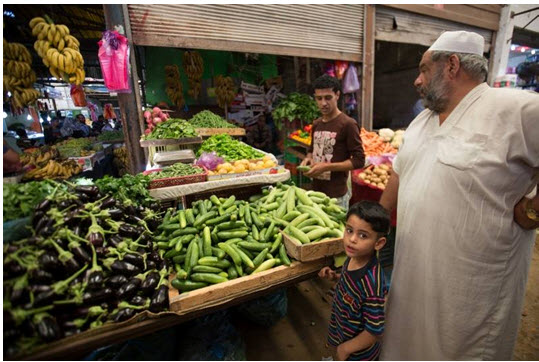Palestinian farmers have reported that Israeli airplanes once again sprayed herbicides over crops in areas next to the border fence between the Gaza Strip and Israel. Gaza farmland was sprayed last week as well, and the Palestinian Ministry of Agriculture indicates that the recent spraying damaged 1,187 dunams (293 acres) of crops, much of it in areas far from the fence with Israel.
A senior official with the Palestinian Ministry of Agriculture told the NGO Gisha that the ministry has asked the International Committee of the Red Cross (ICRC) to convey to Israel its suggestion to bring in its own tractors to raze land and remove vegetation in coordination with the ICRC. The ministry expressed its hope that this arrangement would at least prevent spraying, which harms more distant crops. The official said the ministry has still not received a response from the ICRC.
Last week, the IDF Spokesperson admitted that the military was spraying herbicides in Gaza. The military confirmed that it had sprayed “herbicides and germination inhibitors” in order to “enable optimal and continuous security operations.” According to Gazan farmers, this practice has been going on for a number of years.
The decision to spray toxins over Palestinian crops raises a number of questions Gisha intends to send to the IDF Spokesperson in the next few days:
- When did the army begin spraying herbicides in Gaza, and on how many occasions has it done so?
- How does this practice aid in “enabling optimal and continuous security operations”?
- What kinds of chemicals are being used?
- What is known about the level of danger in ingesting, breathing or having some other contact with these chemicals?
- What is known about the long-term impact of the herbicides, both to the soil and to those who come into contact with them?
- What measures are being taken by the army to prevent harm to the civilian population who may come into contact with the herbicides?
- Is the army prepared to compensate farmers whose crops are damaged by these actions?
- How can the army be certain that these materials won’t pervade throughout the Strip?
- What was the decision-making process that led to this action, and who is responsible for having given the order and who for its implementation?
- Were alternatives to spraying herbicides considered?
- Has the spraying of herbicides taken place at a certain hours of the day or during a specific season or under other specific weather conditions?
- Has the army refrained from spraying during certain climatic conditions?



